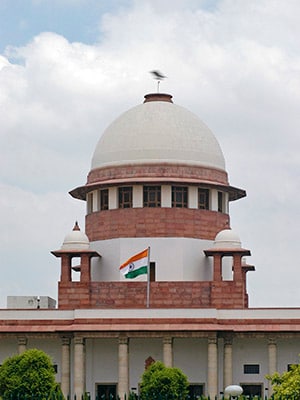
A Recent Supreme Court Ruling Could Kill RTI
Why the recent Supreme Court ruling threatens to kill citizens Right to Information
The Supreme Court has placed the Central Information Commission (CIC), the apex body to deal with appeals regarding RTI, as well as the Information Commissions across the states in a fine pickle.
On September 13, a division bench of the Supreme Court, chaired by Justice AK Patnaik and Justice Swatanter Kumar, passed an order which would fundamentally change the constitution and working of Information Commissions. Apart from the operational problems, the suggested changes would require an amendment to the RTI Act by the government. As a result, none of the information commissioners know whether to discharge their duty and, if so, how. Moreover, many RTI activists are complaining about a blatant case of judicial over-reach.
“The SC can say something is wrong and needs to be changed but they can’t order the legislature to make a law according to their directions,” says Subhash Agarwal, a prominent RTI activist in New Delhi.
The Order
The SC has ordered that Information Commissions should henceforth hear appeals as two-member benches, replacing the existing norm of each member working separately. What further complicates the matter is the ruling that one member in each bench should necessarily be a ‘judicial’ member. By ‘judicial’, the SC implies someone who has practised law for 20 years or preferably a judge or a retired judge of the SC or a high court. Lastly, the Chief Information Commissioner at the Centre and the states should also be a judicial member.
The Disorder
The Central Information Commission has eight active members, including the chief, out of the total 11 vacancies. Not one among them is a judicial member. Nobody, including the commissioners, is clear how they should function, considering there are no judicial members to constitute even a single bench. Even when judicial members join, the bunching of two members in a team is likely to slow down the disposal rate because there will only be half the outlets dealing with complaints, not to mention the increased time taken when two members deliberate. “Effectively the disposal of pending cases will drop to about 50 percent of the current disposals,” says Shailesh Gandhi, a former Information Commissioner at the CIC. The probable rise in pendency to almost five years could sound the death knell for the Act, according to Gandhi.
Certain other elements in the order have confused observers. For instance, it is unlikely that a sitting judge will ever leave the Supreme Court to join the CIC. Yet ironically, a retired judge of the SC would also not be able to join since both the SC and CIC have the same retirement age of 65 years. It is not clear why the head of Information Commissions must necessarily be a judicial member. “If anything, he or she needs to have some administrative acumen over and above a regular member,” says Agarwal.
Still, not every thing is wrong with the SC order. One view is that the inclusion of judicial members is likely to bring some diversity in the appointees to these commissions, often described as a parking lot for bureaucrats. “While the decisions will be more robust, one is still afraid that the real loser might be the common man who may find it too daunting to represent himself in front of a judge and may incur additional costs in hiring lawyers,” says Anjali Bhardwaj, member of the National Campaign for People’s Right to Information.
(This story appears in the 30 November, -0001 issue of Forbes India. To visit our Archives, click here.)





